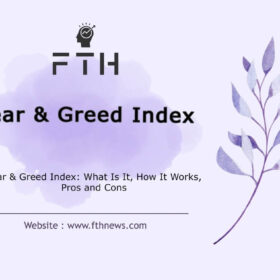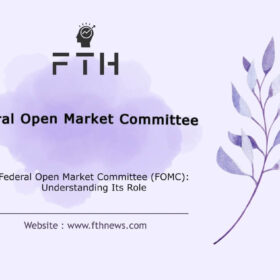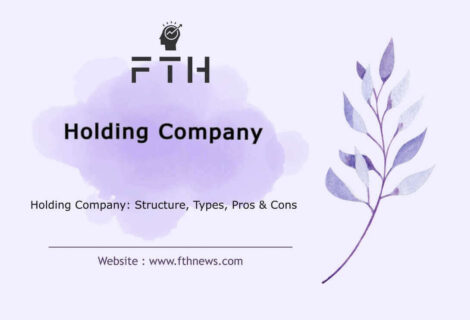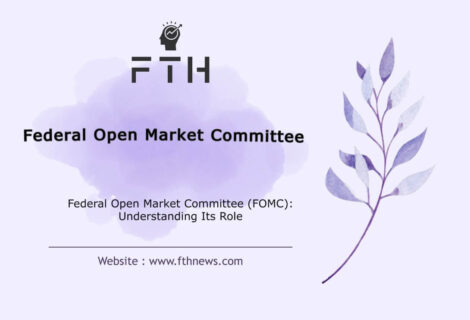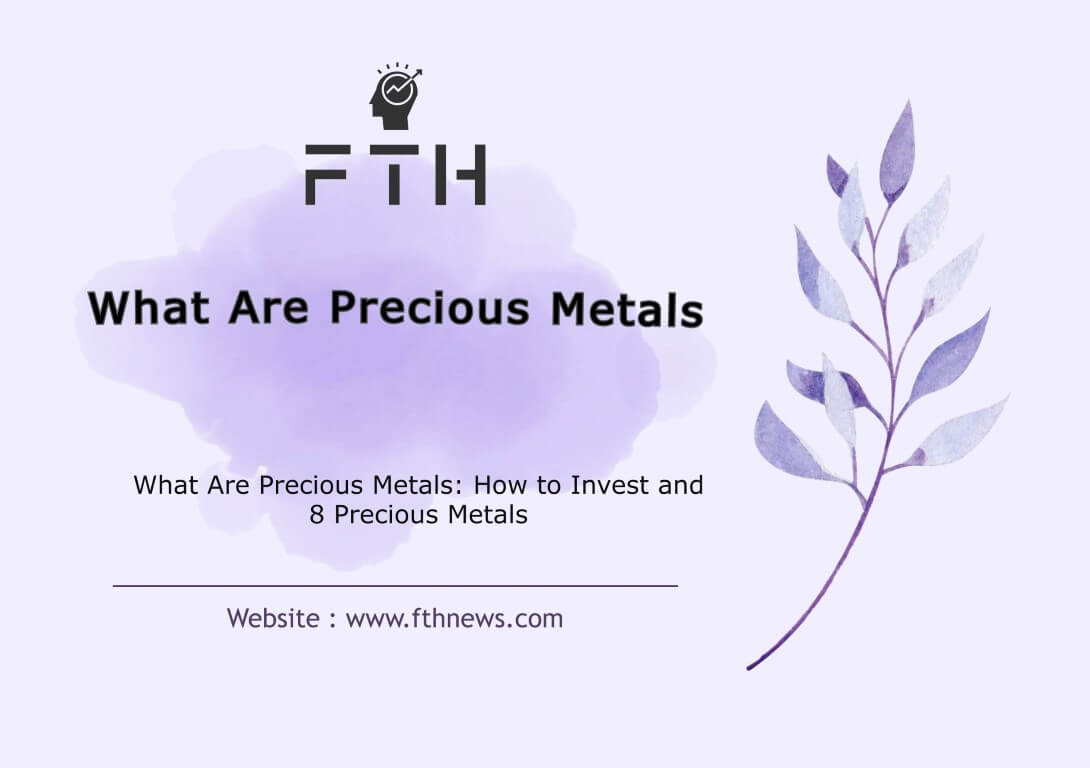
What Are Precious Metals: How to Invest and 8 Precious Metals
In the dynamic world of finance, savvy investors seek opportunities that promise stability and growth. Precious metals, such as gold, silver, platinum, and palladium, have long been recognized as valuable assets offering diversification and a hedge against economic uncertainties. In this comprehensive guide, we will explore the world of precious metals, their historical significance, and how to strategically invest in them to optimize returns while minimizing risk.
What are Precious Metals?
Precious metals, a distinguished group comprising gold, silver, platinum, palladium, rhodium, ruthenium, iridium, and osmium, hold a position of unparalleled value in the financial realm. Their allure is deeply rooted in their rarity, limited supply, and multifaceted historical significance. In this chapter, we embark on a journey to unravel the unique properties of these metals and unveil the wealth of reasons behind their esteemed status in the investment landscape.
The Alchemy of Rarity:
At the heart of the precious metals’ allure lies their scarcity. Gold, often the first to come to mind, is joined by a cadre of metals, each possessing a distinct scarcity that contributes to their value. We delve into the geological and cosmic processes that define their rarity, creating a foundation for understanding their irreplaceable role in various industries.
Unveiling Historical Significance:
To truly grasp the essence of precious metals, we must turn the pages of history. From the glistening gold treasures of ancient civilizations to the industrial revolution’s demand for silver, these metals have left an indelible mark on humanity’s journey. Through exploration of historical narratives, we uncover how these metals have evolved from symbols of wealth to indispensable components in cutting-edge technologies.
Storehouses of Wealth:
Beyond their tangible allure, precious metals have served as storehouses of wealth for centuries. This section explores the cultural and economic foundations that have elevated these metals to symbols of prosperity. We investigate the intrinsic characteristics that make them enduring assets, resistant to the erosive forces of time and economic uncertainties.
Balancing Risks in Portfolios:
As astute investors seek stability amid market turbulence, precious metals emerge as steadfast allies. In this section, we analyze why these metals are considered reliable assets, capable of withstanding sharp market fluctuations. By understanding their role in balancing risks within investment portfolios, we empower investors to make informed decisions that transcend market volatility.
Embark with us on a captivating exploration of the rare, resilient, and rich world of precious metals. In the pages that follow, we will uncover the secrets that make these metals not just valuable, but timeless guardians of wealth and stability. Welcome to the world of precious metals – where scarcity meets significance.
Investing in Precious Metal
In the intricate tapestry of investment possibilities, precious metals stand as pillars of resilience and opportunity. This chapter unfurls the canvas of the investment landscape for these prized metals, illuminating the factors that make them coveted assets. Join us as we delve into the nuanced strategies that investors employ to capitalize on the enduring allure of gold, silver, platinum, palladium, and their counterparts.
The Allure of Physical Ownership:
At the heart of precious metal investment lies the tangible connection to wealth. Physical ownership, often synonymous with holding coins, bullion, or jewelry, offers a direct and palpable link to the timeless value of these metals. We explore the advantages and considerations of possessing tangible assets, acknowledging the historical tradition that once made coins, bullion, and jewelry the sole conduits to precious metal investments.
The Derivatives Dance:
Venturing into the derivatives market introduces a dynamic realm where contracts, options, and futures play a pivotal role. This section unravels the complexities of derivative instruments, providing insights into how investors navigate this intricate dance. By understanding the risks and rewards of derivative trading, one can harness the potential of precious metals without the need for physical possession.
Mutual Funds: A Collective Investment Voyage:
Mutual funds emerge as a collective voyage into the world of precious metals. By pooling resources, investors can tap into the expertise of fund managers who strategically navigate the market. We delve into the workings of precious metal mutual funds, exploring the benefits of this collaborative investment approach and the diverse strategies employed to optimize returns.
Mining Company Shares: Unearthing Opportunities:
For those seeking indirect exposure to precious metals, investing in mining company shares provides a gateway. This section mines the depths of this investment avenue, shedding light on the risks and rewards associated with backing companies involved in the extraction and production of these coveted metals.
Preserving Wealth in the Face of Inflation:
One of the enduring qualities of precious metals is their role as guardians against the erosive effects of inflation. We dissect how gold, silver, and their counterparts serve as hedges, preserving wealth when the value of fiat currencies wavers. Understanding this protective function empowers investors to shield their portfolios during economic uncertainties.
The Timeless Preservation of Value:
A distinctive feature of precious metals is their ability to endure, preserving value across centuries. In this section, we examine the historical track record that cements these metals as timeless guardians of wealth. By understanding how they weather economic storms and geopolitical shifts, investors can gain insights into their potential for long-term wealth preservation.
Embark on this journey through the investment landscape for precious metals, where each strategy is a brushstroke contributing to the masterpiece of financial prosperity. As we navigate the intricacies of physical ownership, derivatives, mutual funds, and mining shares, we unlock the secrets that transform precious metals from commodities into strategic tools for wealth accumulation and preservation. Welcome to the investment horizon where the allure of gold, silver, platinum, and palladium gleams with promise.
Physical vs. Non-Physical precious metals Investment Strategies
In the vast landscape of precious metal investments, choosing the right strategy is akin to navigating through a myriad of possibilities. This chapter serves as your guide, illuminating the two main avenues – physical and non-physical investments. Whether you’re drawn to the tangible allure of holding physical bullion or prefer the agility of non-physical transactions through online platforms, understanding the nuances of each approach is pivotal for informed decision-making.
Physical Investments: Unveiling Tangibility:
- Tradition Meets Tangibility: Physical investments involve the tangible ownership of precious metals, often in the form of bullion or coins. This traditional approach has long been a symbol of wealth and a store of value throughout history.
- Advantages of Physical Ownership: The direct ownership of physical bullion provides a sense of security, reducing counterparty risk. Holding precious metals in hand can offer peace of mind during times of economic uncertainty.
- Challenges and Considerations: However, physical ownership comes with its challenges, including storage costs, insurance expenses, and the risk of theft. Accessibility and liquidity may also be limited compared to non-physical alternatives.
Non-Physical Investments: Mastering the Virtual Realm:
- The Rise of Online Platforms: In the contemporary financial landscape, non-physical investments have gained prominence through online platforms such as the stock market, futures, and forex. These avenues offer accessibility, liquidity, and a dynamic environment for traders and investors.
- Diverse Market Instruments: Investors can engage in precious metal trading without physically owning the assets. The use of derivatives, mutual funds, and mining company shares allows for diverse exposure to the precious metal market.
- Advantages of Non-Physical Investments: Non-physical investments eliminate concerns related to storage, insurance, and the physical condition of the metals. Online platforms also provide real-time market data and swift transaction capabilities.
- Risks and Volatility: However, non-physical investments come with their own set of risks, including market volatility, counterparty risk, and the potential for speculative behavior. The value of investments can be influenced by external factors beyond the investor’s control.
Choosing Your Path: A Holistic Approach:
- Diversification Strategies: Some investors adopt a holistic approach, combining both physical and non-physical strategies to leverage the benefits of each. This diversification allows for a balanced portfolio, mitigating the drawbacks of one strategy with the strengths of the other.
- Market Knowledge and Research: Regardless of the chosen approach, market knowledge and continuous research are paramount. Understanding market trends, geopolitical events, and economic indicators empowers investors to make strategic decisions aligned with their financial goals.
The Evolving Landscape: Fintech and Precious Metals:
- Fintech Integration: The integration of financial technology (fintech) in precious metal investments has revolutionized the landscape. Online platforms, mobile apps, and robo-advisors offer new avenues for both physical and non-physical investors, providing user-friendly interfaces and innovative features.
Embark on this chapter with the awareness that the choice between physical and non-physical investments is not a binary decision but a strategic one, tailored to your financial aspirations, risk tolerance, and preferences. Whether you find solace in the tactile experience of physical ownership or embrace the agility of non-physical transactions, the key lies in aligning your chosen strategy with your unique investment journey. Welcome to the realm where financial decisions become a personalized art, and the pathway to wealth is crafted by your choices.
What are The 8 Most Precious Metals
The realm of precious metals is a dynamic landscape, shaped by the ebb and flow of supply and demand, geopolitical shifts, economic conditions, and market sentiment. As of my last knowledge update in January 2022, here’s an insightful ranking of precious metals, offering a glimpse into their historical value, from the rarest to the more commonly traded:
1. Rhodium (Rh):
- Unrivaled Rarity: Rhodium stands as one of the rarest and most sought-after precious metals, contributing to its exceptional value.
- Catalytic Marvel: Primarily used in catalytic converters, its price has surged due to heightened demand and constrained supply, making it a key player in environmental efforts.
2. Gold (Au):
- Timeless Store of Value: Gold, a perennial symbol of wealth, has served as a store of value for centuries, offering stability in times of economic uncertainty.
- Versatile Usage: Widely utilized in jewelry and electronics, gold’s universal appeal extends to its role as a safe-haven investment.
3. Platinum (Pt):
- Rarity Redefined: Platinum, rarer than gold, boasts various industrial applications, including catalytic converters, jewelry, and electronics.
- Economic Stability Indicator: With a tendency to outprice gold during periods of economic stability, platinum holds a unique position in the precious metals hierarchy.
4. Palladium (Pd):
- Automotive Demand Surge: Palladium’s primary application in catalytic converters has propelled its price surge, driven by increased demand in the automotive industry.
- Versatility in Technology: Beyond automotive, palladium plays a vital role in electronics and dentistry, adding to its market significance.
5. Iridium (Ir):
- Dense and Resilient: Iridium, known for its density and corrosion resistance, finds applications in spark plugs, electrical contacts, and specialized fields.
- Niche Specialization: Its specialized applications contribute to its scarcity and value in specific industries.
6. Silver (Ag):
- Industrial and Precious Dualism: Silver, with dual roles in industry and investment, boasts applications in electronics, photography, solar panels, and jewelry.
- Historical Significance: Recognized for its historic role as currency, silver’s value extends beyond industrial applications.
7. Ruthenium (Ru):
- Electronics and Alloys: Ruthenium’s niche lies in electronics, superalloys, and chemical processes, often alloyed with other metals for enhanced properties.
- Specialized Enhancement: Its applications in specialized alloys make it a valuable component in specific industrial processes.
8. Osmium (Os):
- Dense and Brittle: Osmium’s density and brittleness define its characteristics, with limited commercial applications.
- Specialized Alloys: Often utilized in certain specialized alloys, osmium’s scarcity contributes to its unique standing among precious metals.
As with any dynamic market, the prices of precious metals can fluctuate, influenced by an array of factors. To stay informed on real-time market dynamics and obtain accurate information on precious metal prices, it is recommended to consult reputable sources actively monitoring these changes.
Factors Influencing Precious Metal Prices
In the intricate world of precious metals, where values fluctuate like the tides, understanding the nuanced factors that sway prices is paramount for savvy investors. This chapter embarks on a journey to demystify the intricate web of influences on precious metal prices, shedding light on the dynamics of supply and demand, geopolitical conditions, and industrial applications. Armed with this knowledge, investors can navigate the market with clarity and make informed decisions.
The Dance of Supply and Demand:
- Scarcity as a Driving Force: The delicate balance between supply and demand is a fundamental force shaping precious metal prices. As these metals are inherently scarce, any disruptions in their production or surges in demand can send ripples through the market.
- Mining Trends and Exploration: Understanding the mining landscape and exploration trends unveils insights into potential shifts in supply. Mining regulations, discoveries of new deposits, or technological advancements can impact the availability of precious metals.
Geopolitical Conditions:
- Global Turbulence and Safe Havens: Geopolitical events wield significant influence over precious metal prices. During times of political unrest, economic uncertainty, or global crises, precious metals often emerge as safe-haven assets. Investors seek refuge in their stability, causing increased demand and subsequently impacting prices.
- Currency Movements: Changes in global currency values, driven by geopolitical events, can affect the attractiveness of precious metals. In times of currency devaluation or instability, these metals may shine as alternative stores of value.
Industrial Uses and Technological Advancements:
- Beyond Jewelry and Coins: Precious metals have evolved beyond their traditional roles in jewelry and coins. Their applications in various industries, including electronics, catalytic converters, and renewable energy technologies, influence demand.
- Tech-Driven Demand: The ever-expanding tech landscape continuously introduces new applications for precious metals. Innovations in electronics, green technologies, and medical devices can spark increased demand, affecting prices.
Economic Indicators and Monetary Policy:
- Macro-Economic Trends: Precious metal prices are sensitive to macro-economic indicators. Economic growth, inflation rates, and interest rates can influence investor sentiment and, consequently, demand for these assets.
- Monetary Policy Shifts: Central bank policies, such as interest rate adjustments and quantitative easing, can impact the perceived value of fiat currencies. Investors often turn to precious metals as a hedge against currency devaluation.
Market Sentiment and Speculation:
- Investor Psychology: The sentiment and perception of investors play a crucial role in shaping precious metal prices. Speculative activities, market rumors, and overall investor sentiment can create short-term fluctuations.
- Fear and Greed Dynamics: Fear of economic downturns or geopolitical instability and the allure of potential profits during bullish markets contribute to the ebb and flow of precious metal prices.
Embarking on a quest to understand these multifaceted factors provides investors with a compass to navigate the ever-shifting landscape of precious metal prices. By staying attuned to supply and demand dynamics, geopolitical shifts, industrial uses, economic indicators, and market sentiment, investors can make informed decisions, transforming market complexity into strategic advantage. Welcome to the heart of the precious metal market, where knowledge is the key to unlocking the full potential of your investments.
A Guide to Informed Precious Metal Investments
As we culminate our journey through the realm of precious metal investments, this chapter serves as a beacon, guiding investors toward informed decisions in this dynamic and alluring market. Offering practical tips, summarizing key considerations, and suggesting strategies, we illuminate the path that leads to wise and calculated choices. Welcome to the final chapter – a compass for making informed decisions in the precious metals arena.
Understanding Market Trends: The Pulse of Precious Metals:
- Historical Analysis: Begin by delving into historical market trends. Analyzing past performance can offer valuable insights into potential future trajectories. Historical highs and lows, market cycles, and reaction patterns during economic events provide a foundation for understanding current conditions.
- Technical Analysis: Embrace technical analysis tools to assess price movements, identify patterns, and spot potential entry or exit points. Technical indicators, charts, and trendlines serve as invaluable resources for gauging market sentiment.
Choosing the Right Investment Instruments: Tailoring Your Portfolio:
- Diversification Strategies: Consider a diverse portfolio that balances different precious metals and investment instruments. Diversification minimizes risk exposure and optimizes potential returns.
- Risk Tolerance Assessment: Align your investment choices with your risk tolerance. Assess the level of risk you are comfortable with and tailor your portfolio accordingly. Precious metal investments can range from conservative to more speculative, depending on individual preferences.
Staying Informed about Global Economic Conditions: The Macroscopic Lens:
- Economic Indicators: Keep a watchful eye on key economic indicators. Factors such as inflation rates, interest rates, and global economic growth can impact precious metal prices. Stay informed about central bank policies and major geopolitical events that may influence market dynamics.
- Currency Movements: Understand the relationship between precious metals and currency movements. Shifts in currency values, especially during times of economic uncertainty, can influence the attractiveness of precious metals as alternative stores of value.
Strategic Timing and Patience: Navigating the Waves:
- Patient Approach: Precious metal investments often reward patient investors. While short-term fluctuations are inevitable, a long-term perspective allows you to ride out market volatility and benefit from the potential appreciation of your investments.
- Strategic Timing: Consider market entry and exit points strategically. Be mindful of macroeconomic trends, geopolitical events, and shifts in investor sentiment. Strategic timing can enhance the overall performance of your precious metal portfolio.
Seeking Professional Advice: The Wisdom of Guidance:
- Financial Advisors: Consider seeking advice from financial professionals with expertise in precious metal investments. A qualified financial advisor can offer personalized guidance based on your financial goals, risk tolerance, and market conditions.
- Continuous Learning: The precious metals market is dynamic, and continuous learning is a key to success. Stay updated on market developments, industry trends, and emerging technologies that may impact the market.
Embracing Technological Tools: Fintech Integration:
- Technological Platforms: Leverage fintech tools and platforms for real-time market data, trend analysis, and portfolio management. Online platforms, mobile apps, and algorithmic trading can enhance your ability to make informed and timely decisions.
As we conclude this journey, remember that the world of precious metal investments is both fascinating and nuanced. By understanding market trends, choosing the right instruments, staying informed about global economic conditions, embracing patience, seeking professional advice when needed, and leveraging technological tools, you empower yourself to navigate this intricate landscape. May your investment decisions be informed, strategic, and aligned with your financial aspirations. Here’s to a future adorned with the glittering success of your precious metal investments.
Conclusion:
Navigating the world of precious metal investments requires a nuanced understanding of each metal’s unique properties and the broader economic landscape. By grasping the intricacies of these assets and adopting sound investment strategies, investors can unlock the wealth potential offered by precious metals, safeguarding their portfolios against volatility and capitalizing on long-term growth opportunities.
FAQ
Precious metals are rare, naturally occurring metallic elements valued for their scarcity and economic significance. Examples include gold, silver, platinum, and palladium. They have various industrial uses, are sought after for jewelry, and serve as a store of value in investments.



